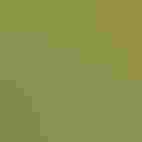Baird’s Sparrow
At a Glance
A grassland sparrow, breeding on the northern Great Plains, wintering locally in the Southwest. Audubon discovered this bird in 1843, and named it for the young Spencer Baird (who would later become a leading ornithologist). The bird then dropped out of sight, and was not seen again for almost 30 years. This kind of disappearing act seems appropriate for Baird's Sparrow, which runs through the grass like a mouse, almost never perching up in the open, and is very difficult to flush. On the nesting grounds, however, males will give a surprisingly musical song, much more attractive than those of related sparrows.
All bird guide text and rangemaps adapted from Lives of North American Birds by Kenn Kaufman© 1996, used by permission of Houghton Mifflin Harcourt Publishing Company. All rights reserved.
Category
New World Sparrows, Perching Birds
IUCN Status
Least Concern
Habitat
Desert and Arid Habitats, Fields, Meadows, and Grasslands
Region
Plains, Rocky Mountains, Southwest, Western Canada
Behavior
Direct Flight, Running, Undulating
Population
3.400.000
Range & Identification
Migration & Range Maps
Seldom detected during migration. Arrives on wintering areas during October and November, departs during April. Extremely rare stray east or west of normal migration route through prairies.
Description
5-5 1/2" (13-14 cm). Short-tailed and flat-headed. Mustard yellow tinge on head, may show up as rich ocher stripe on center crown. Whitish below with necklace of dark streaks on chest. Streaky or scaly look on back.
Size
About the size of a Sparrow
Color
Black, Brown, Tan, White
Wing Shape
Broad
Tail Shape
Notched, Rounded, Square-tipped
Songs and Calls
3 short notes followed by a musical trill on a lower pitch.
Call Pattern
Falling
Call Type
Chirp/Chip, Trill, Whistle
Habitat
Mostly native prairies. Breeds mainly in northern prairies with fairly tall grass and with scattered tall weeds or low bushes; also sometimes nests in fields of wheat or other crops. In migration and winter found mostly on shortgrass prairie and in weedy fields.
Sign up for Audubon's newsletter to learn more about birds like the Baird's Sparrow
Behavior
Eggs
4-5, sometimes 3-6. Grayish white, heavily spotted with reddish brown. Incubation is by the female only, about 11-12 days.
Young
Both parents feed young (but the female may do more at first). Young leave the nest after about 8-10 days, before they are able to fly, and are fed by their parents for at least another 1-2 weeks. 1 brood per year.
Feeding Behavior
Forages on the ground, moving about rather slowly among grass clumps. Almost always forages alone.
Diet
Mostly insects and seeds. Diet varies with season. In summer feeds mainly on insects, including grasshoppers, caterpillars, moths, beetles, leafhoppers, and others, as well as spiders and seeds. Young birds are fed mostly grasshoppers and caterpillars. Diet at other seasons is mostly seeds of weeds and grasses.
Nesting
May nest in small, loose colonies. To defend nesting territory, male sings from the top of a tall grass stem, weed, or low bush. Courtship display of male may involve walking on ground, fluttering one wing at a time over his back, repeatedly bowing. Nest site is on the ground in a grassy area, well hidden and hard to find. Usually in a slight depression so the rim of the nest is level with the ground, sometimes tucked under a dense overhanging grass clump or built within the base of such a clump. Nest (probably built by the female) is a shallow open cup made of dry grass, sometimes with some weeds added; may be lined with fine grass, animal hair, moss.
Conservation
Conservation Status
Originally was a very common bird within its range, now uncommon and local. Loss of habitat on summer range (to farming) and winter range (to overgrazing) probably played a part in decline.
Climate Threats Facing the Baird's Sparrow
Choose a temperature scenario below to see which threats will affect this species as warming increases. The same climate change-driven threats that put birds at risk will affect other wildlife and people, too.





